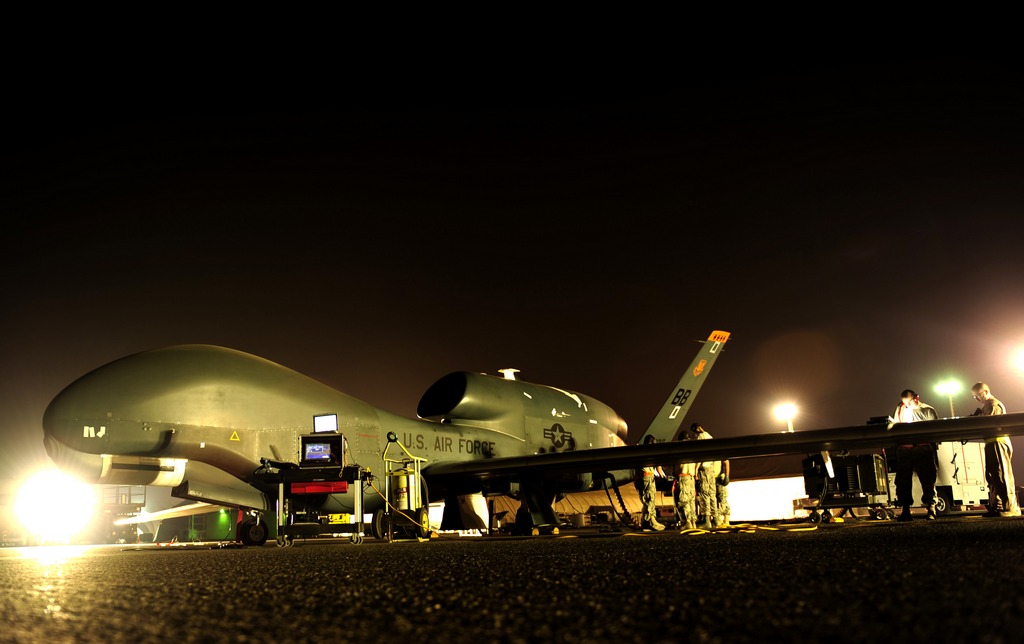
There are pictures that don’t need comments. This one allows us to talk about the B-2’s famous “Hawk’s beak” profile. That seems to be inspired by Mother Nature, but was designed in that way for Low Observability and aerodynamics reasons.
I’ve created the composite image you can find in this post after noticing the top image that appeared on Reddit hours ago and was posted on various Facebook pages thereafter. That photo shows a bird (I’m not an expert, it looks like a falcon to me, but it could be something else…) whose profile, from that particular point of view, clearly reminds that of the Northrop Grumman B-2 Spirit stealth bomber.
In fact, among the peculiarities of the B-2 there is also its leading edge design concept: the Spirit features a toothpick edge shape that turns into a “hawk’s-beak” profile in the nose. The hawk bill shape of the leading edge was produced by Richard C. Scherrer, an engineer who had worked at Lockheed Martin Skunk Works, on the F-117, before joining Northrop Grumman for the Advanced Technology Bomber. The leading edge Dick Scherrer produced gave the B-2 the needed aero performance for the high subsonic airframe.
Here’s the story of the B-2’s Toothpick Edge, included in Northrop Grumman’s “B-2: The Spirit of Innovation” ebook.
The B-2’s leading edge was already a marvel of fabrication and design, and its shape was the jealous domain of the RCS engineers. Wartime conditions and aerodynamics now demanded a change in that edge. The B-2 might be compelled to land at some unusual airfield during wartime. SAC wanted their new bomber to be able to operate out of different bases during wartime – in fact, they wanted the B-2 to be able to land and take-off from any airfield that could accommodate a 737. The original, low observable design called for a sharp leading edge – all part of creating an airplane as close as possible to an infinite flat plate. Now the issue was getting enough airflow over the wing for a safe take-off at high angle of attack on some hot day at an unusual wartime airfield.
“With a sharp edge, as you start to pull angle of attack at a low speed, the airflow starts to go span-wise,” said Cashen. Without enough air rushing back, the trailing edge control surfaces lose power. The numbers were conclusive. “With a full bomb load on a hot day, we could stall the airplane,” said Cashen.
Solutions acceptable for normal airplanes just wouldn’t work for stealth. One afternoon Sam Craig, one of the aerodyamics experts working the problem, called Cashen into his office.
“Give it to me in the simplest terms,” Cashen asked.
I need radius here, Craig indicated, pointing to a section of the wing’s leading edge.
Ultimately, the solution was to put radius only where it had to be to generate the airflow. The leading edge originally had a constant thickness. With the change, the design tapered the edge radius to increase airflow to crucial wing sections. The leading edge section was now rounder in the middle and thinner
at the ends – like a toothpick. Ken Mitzner, their great theorist, had done experiments which reminded Cashen that only the main lobe of radar return would be affected by plumping up the radius. Kinnu let them send Locus to the range with a model of the toothpick. The first time, it didn’t work.Kinnu let them try again, and this time they got the taper right, and brought home the range results that proved it. Caspar Weinberger reportedly called it “the last great invention of the B-2.” Of course, it wasn’t. There were many more to come.”
Indeed, there were many more to come.
For instance, another really interesting system on the B-2 is the GLAS (Gust Load Alleviation System), that looks like the aircraft’s beaver tail and counters the rolling impact or resonance to smooth out the ride of the B-2 in turbulent conditions and extend the aircraft’s fatigue life.
According to the same ebook, the idea of a gust load alleviation system came from Albert F. Myers. The effect of the GLAS was going to decrease the gust load significantly: “Quick response by the flight controls would steer the B-2 to compensate for the gusts. By the time they finished, the B-2 had relatively larger control surfaces than a typical fighter. They moved faster, too. The F-16 surfaces clocked 80 degrees of motion per second, while the B-2’s inboard elevons hit 100 degrees per second. Just how good was it? A typical standard was to decrease 10% to 12% of the gust load. On the B-2, the fast-responding flight control system decreased a whopping 40% of the gust load.”



